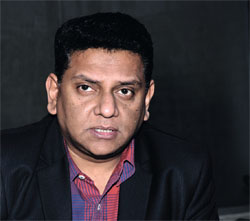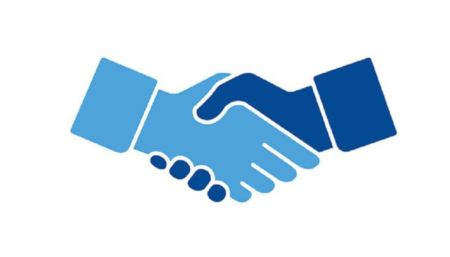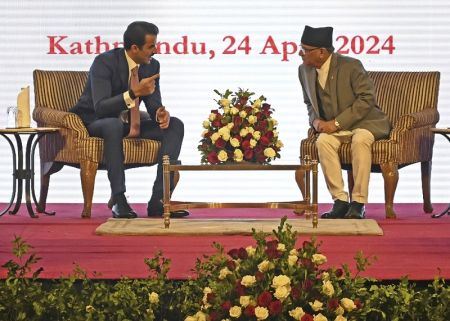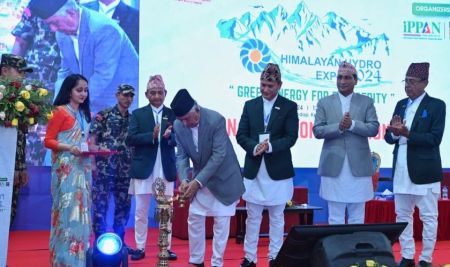 Shashin Devsare, executive director of Karbonn Mobiles, was in Nepal for signing cricketer Paras Khadka as Karbonn's brand ambassador along with the launch of two new smartphones. Since its establishment in 2009, this Indian smartphone maker is rapidly expanding its arms into the technology market. In an interview with Sanjeev Sharma of the New Business Age, Devsare talked about company's strategies for expansion in Nepali market and its upcoming products. Excerpts:
Shashin Devsare, executive director of Karbonn Mobiles, was in Nepal for signing cricketer Paras Khadka as Karbonn's brand ambassador along with the launch of two new smartphones. Since its establishment in 2009, this Indian smartphone maker is rapidly expanding its arms into the technology market. In an interview with Sanjeev Sharma of the New Business Age, Devsare talked about company's strategies for expansion in Nepali market and its upcoming products. Excerpts: What brings you to Nepal?
The purpose of my visit is signing the MoU with cricketer Paras Khadka, whom we have appointed as the new brand ambassador. We are very happy to take forward the legacy that Karbonn has created in terms of its association with cricket in Nepal also. We are very happy to have Paras as part of the Karbonn team. Other than that, I came here for the launch of two new smartphone models, the Titanium S1 Plus and Smart A92. The launch will re-enforce our mission to bring in latest technology to Nepal. In India, these models were introduced last month.
How essential is Nepal's market for your company?
Karbonn has sold more than one million handsets in the last four years in Nepali market. For the current financial year we have set a target of 350,000 handsets, which should give us very comfortable position among top three brands in Nepal.
Nepal's market has a presence of almost every leading smartphone brand. How fierce is the competition for Karbonn? What are the strategies of your company to stay ahead in the competition?
There is absolutely no doubt about the competition. But, the fact that we brought Karbonn to Nepal just little over one year after the launch in India shows our commitment to the market. The response we have got from Karbonn phone users in Nepal has been phenomenal. That is why we have seen such rapid growth in a short span of time.
There is a three-pronged strategy that we are going to be using to expand our market share. One is the distribution network. With 30 distributors and 1,800 outlets we have the widest and largest distribution network in Nepal. Second is the strengthening of the service network. Karbonn is the first mobile phone brand to introduce toll-free line for our customers in case they have any queries or problems with their handsets. Also the service network has already been expanded to 15 stations and is planned to have 20 in the current FY. Basically we have set our objective to have best and biggest service network in the country.
Third part of the strategy is about the marketing of our products. Signing a local brand ambassador for the first time is the commitment of Karbonn in terms of how we are going to appeal the local population. Karbonn has been associated with Indian Premier League (IPL) and some of the biggest Indian cricketers as well but we still felt that Paras will give immense value. People will be able to identify the brand better if we have a local brand ambassador.
Who are the main competitors of Karbonn Mobiles?
I would say every brand is a competitor. However, we are not focused on what other brands are doing but more on what we planned to do. We have one of the highest and fastest rate of model launches in India alongside widest distribution network over there. Karbonn has been consistently investing in brand building whether it was the association with the IPL or the presence that we have created on a 360 degree basis media communication across all the channels. I think the consistency that we have shown in terms of making investment in brand has eventually started reaping fruits for us.
Karbonn has been launching high-end smartphones into the market. How do you find the reception of premium handsets?
We have been very pleasantly surprised that our premium handsets are also being received very well. Encouraged by that we have also launched the hexa-core chipset based smartphone, which is the first from any Indian brand. We have partnered with Amazon.com to launch the phone in India. Similarly, Karbonn has also launched two octa-core handsets, Octane and Octane Plus. Currently we are testing those products for Nepal. By end of June or by the beginning of July we would be able to launch those handsets in Nepali market.
Who are the targeted customers for Karbonn's premium handsets?
Even though these are high-end devices, surprisingly today's youths do not really care about handset pricings. Probably this is one of the reasons of our success as we have been able to bring great technology that values prices. So, youths are the primary target group for the premium handset segment.
Karbonn has also come up with tablet pcs in its product lineup. How is the company's tablet category faring in the market?
Actually tablet category is declining globally. Because the use case scenario for tablet as a product is not very clear and evident. Also what has happened is that when mobile phones have been available in screen sizes of 5 inch and upwards, people have not really felt the need to go for tablets. Nevertheless, we have launched about 10 models of tablets so far. But, currently our focus is on smartphones. We would be looking at introducing devices on various operating systems.
Despite the rapid growth, the smartphone market is witnessing fall in prices. Is it affecting the sales of your company?
If we look into the market stats, for the first time smartphone sales topped the sales of feature phones last year. While we believe that countries like India and Nepal are still in the early stages of smartphone adoption, it is only a matter of few months for the market to become around 25 to 30 per cent smartphone focused. There onwards, probably in about 2 to 3 years time, we will see more than 50 per cent of the sales would be in smartphone category. We are trying to address a very large segment so that people can move from feature phones to smartphones.
It is true that prices are falling and they will continue to fall. But in the same time the phones are going to be equipped with better technologies. The phones will have faster processors, better screens, higher camera capabilities and bigger memories and these devices are obviously going to be priced at a premium. I think that the prices will not fall dramatically but better technology will be available at better price points.





















